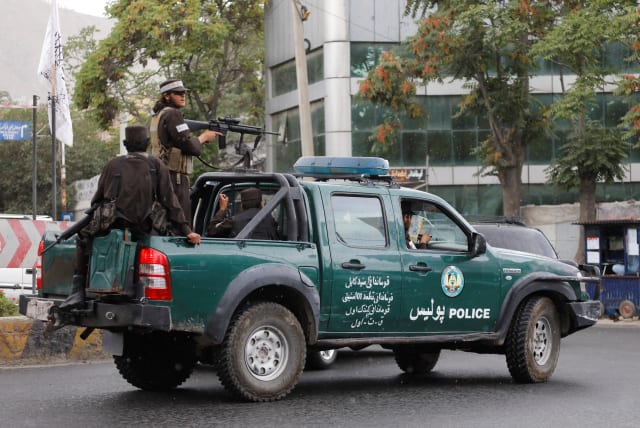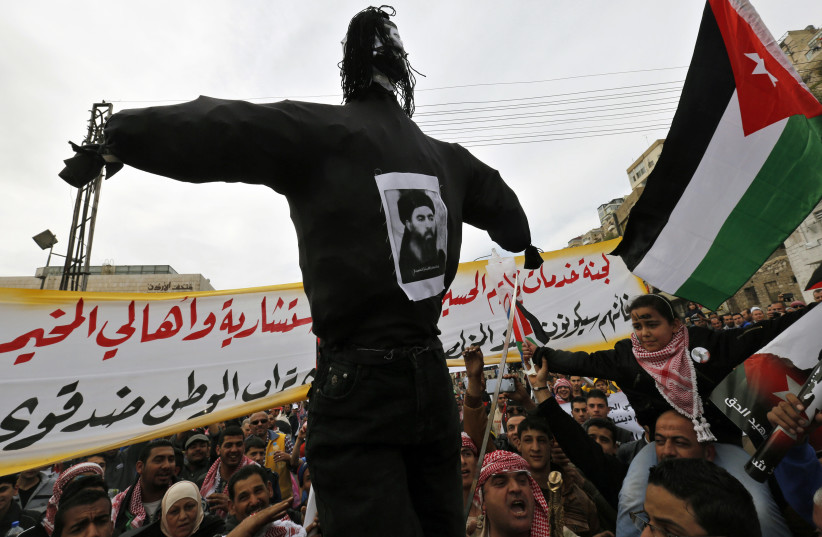Jihadist recruiters prey on migrants to Europe

Recruiters target vulnerable individuals and relocate cells created in Africa.
To hear an in-depth discussion in Spanish on efforts by jihadist organizations to recruit African migrants to Europe, listen to The Media Line’s Spanish-language podcast, Medio Oriente 123, hosted by Debbie Mohnblatt. In the fifth episode, Mohnblatt is joined by Christian Ricós Sevilla, a Spanish specialist in insurgence and jihadist organizations, and Carmelo Aguilera Galindo, a researcher on the recruitment of migrants by terrorist organizations at the University of Almería, Spain.
Jihadist organizations such as ISIS and al-Qaida take advantage of the vulnerability of African migrants who enter Europe illegally, to radicalize and recruit them. The organizations profile the targets on social media when they seem detached from society and unhappy – which they frequently do. They are then drawn into the world of terrorism with propaganda and an appealing discourse.
This is one of the common methods that jihadist terrorist organizations use to launch cells in Europe, says Christian Ricós Sevilla, a Spanish specialist in insurgence and jihadist organizations. He told The Media Line that Islamic State and al-Qaida are the two main jihadist organizations that have the needed infrastructure to operate in Europe, either to seek migrants to radicalize and recruit or to launch cells that are formed and matured in Africa before being launched to Europe.
“They recruit people in Africa who are already radicalized and when they have a group that they believe has the potential to achieve whatever goal they have set in Europe, they gather them in places they own in the Sahel or the Maghreb, train them, and then send them off,” Ricós Sevilla explains.
Cell relocation

There are several ways to relocate the cells in Europe, he notes. The cell members who are not yet profiled by the international authorities as part of these organizations can be sent either by plane through Turkey or via the Spanish protectorates in Morocco – Ceuta and Melilla. The profiled ones are usually sent to Europe through illegal migration routes, he points out.
When they arrive, Ricós Sevilla continues, “they know exactly what to do and where to go to receive all the benefits that refugees receive in Europe. Then they need to begin the phase of infiltration in society.”
He notes, however, that not all of the cells that attempt to arrive in Europe are successful, as some make common mistakes that betray them due to their excitement to finally perform a mission and become martyrs. “Many upload videos to TikTok or other social network platforms as they embark and that is when they get caught by the security forces,” Ricós Sevilla says, noting how social media are used by the intelligence services to track threats.
Another method used to launch cells in Europe is to target migrants who are in vulnerable positions, radicalize them, and finally recruit them to become operatives.
Carmelo Aguilera Galindo, a researcher on the recruitment of migrants by terrorist organizations at the University of Almería, Spain, told The Media Line that most of those targeted leave Africa to survive while running away from conflict and with the goal of finding a better life in Europe.
“In most cases, their countries are in conflict,” he noted, “and they’d rather embark on that 10,000 km journey, which they don’t even know whether they will survive.” He explained that the trip was so dangerous because greedy mafias in charge of the passage across often stormy Mediterranean waters use rickety boats and overload them with people.
Migrants who arrive successfully go to absorption centers, where they can request political asylum if they come from conflict zones. With the help of nongovernmental organizations, they try to look for a job and start moving forward with their lives.
He notes, however, that there are cases where the migrants fail to find jobs and integrate into society. “That is when they are at risk to fall into the hands of terrorist organization recruiters,” Aguilera Galindo said. The jihadist organizations “take advantage of their vulnerable position and start justifying their situation by saying that it is the fault of the infidels who would rather hire a European and not them. Then the message starts to radicalize.”
These groups’ propaganda is designed to be very appealing to teenagers who are not integrated into society and are seeking their identity, noted Ricós Sevilla. “They understand that teenagers are appealed to by the publicity that is attractive to them, the same way Google ads understand it,” he said.
He also notes that often the propaganda is spread through video games that have violent content, such as Fortnite, Call of Duty, and others. Also, they use videos where the Islamic State members appear wearing new clothing, use modern weapons, look clean, use new vehicles, and speak in French, English, or Spanish. This is in contrast to the videos that al-Qaida used to make, where the actors were dressed as the Taliban, which is not appealing to youngsters living in Europe, Ricós Sevilla explained.
“Recruiters identify this and create a group chat with people that fall into this profile. Then they get invited to a mosque and later, those that they see as potential recruits are invited to illegal gatherings that could take place in basements or private houses. Then they slowly get radicalized,” he adds.
These recruits are often sent to commit lone-wolf attacks such as stabbings or car rammings, as happened on the Barcelona boardwalk in 2017, he pointed out.
On August 17, 2017, Younes Abouyaaqoub, a Moroccan-born man who lived in Spain since he was 4 years old, drove a van into a crowd of pedestrians on the La Rambla boardwalk in Barcelona, Spain, killing 24 people and injuring 152. The attack was carried out by a terrorist cell that had connections to the Islamic State group.
Terrorist organizations also sometimes blackmail migrants to recruit them, Ricós Sevilla notes. “Either they claim that they have a debt with them, or they even subsidize their arrival to Europe and later claim that they owe them money for that, and sometimes they threaten their family members that are still in Africa,” he said.
Aguilera Galindo cites a 2021 study by the Madrid-based Elcano Royal Institute for International and Strategic Studies that says 5% of Europe’s residents are noncitizens, and of them, only a tiny percentage are affiliated with a terrorist organization. “What happens is that the ‘boom’ of the news creates a perception that exponentiates reality. This is used by extreme-right political parties in Europe to justify their message against immigrants,” he said.
Jerusalem Post Store
`; document.getElementById("linkPremium").innerHTML = cont; var divWithLink = document.getElementById("premium-link"); if (divWithLink !== null && divWithLink !== 'undefined') { divWithLink.style.border = "solid 1px #cb0f3e"; divWithLink.style.textAlign = "center"; divWithLink.style.marginBottom = "15px"; divWithLink.style.marginTop = "15px"; divWithLink.style.width = "100%"; divWithLink.style.backgroundColor = "#122952"; divWithLink.style.color = "#ffffff"; divWithLink.style.lineHeight = "1.5"; } } (function (v, i) { });
